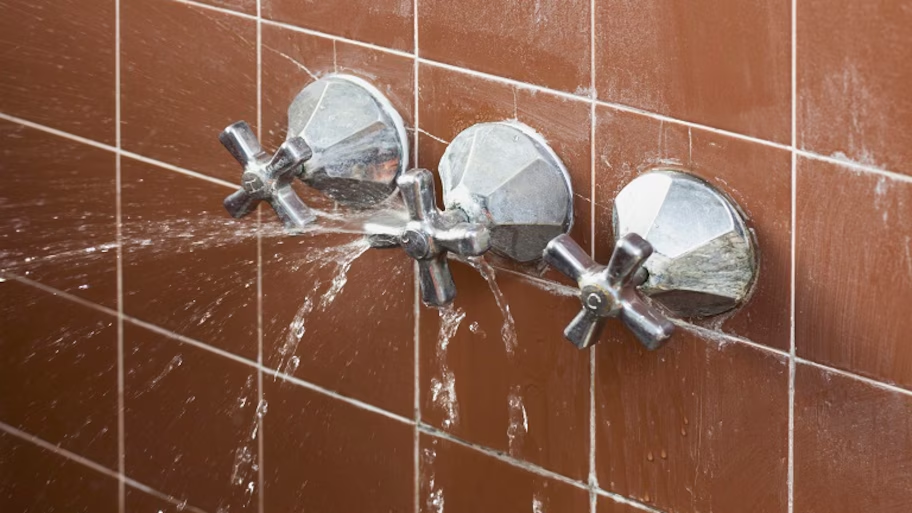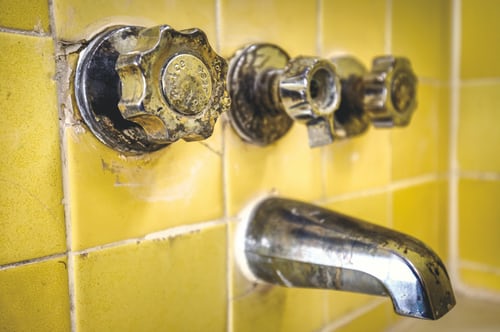Typical Sources Of Water Damage in a Bathroom
Typical Sources Of Water Damage in a Bathroom
Blog Article
This post down below pertaining to How to Repair and Prevent Bathroom Water Damage? is amazingly motivating. You should see for yourself.

Water damage usually happens in the restroom as a result of the water made use of daily. Often, the damages could be a little mold and mildew from the shower. Other times, it's large damage on your flooring. Whatever it is, it is constantly excellent to recognize the reason and also prevent it before it takes place.
This guide will certainly experience several of the common reasons for water damage in the restroom. We will also examine what you can do to prevent these causes from damaging your washroom. Let's dive in.
5 Usual Causes of Water Damage in Restrooms
These are the common reasons you would have water damage in your restrooms and just how you can identify them:
Ruptured or Dripping Pipelines
There are lots of pipelines bring water to various parts of your washroom. Some pipelines take water to the bathroom, the sink, the faucets, the shower, and also numerous other areas. They crisscross the tiny location of the restroom.
Occasionally, these pipelines can obtain corroded and also ruptured. Various other times, human activity could cause them to leak. When this happens, you'll find water in the corners of your bathroom or on the wall.
To spot this, look out for gurgling walls, molds, or mildew. Call an expert emergency plumbing technician to fix this when it occurs.
Fractures in your wall ceramic tilesv
Restroom wall tiles have been specially designed for that purpose. They protect the wall from dampness from individuals taking showers. Nonetheless, they are not unbreakable.
Often, your shower room wall tiles crack and allow some moisture to permeate right into the wall. This could potentially destroy the wall surface if you do not take any kind of activity. If you observe a split on your wall surface ceramic tiles, fix it immediately. Do not wait up until it ruins your wall.
Overflowing toilets and also sinks
As human beings, often we make errors that could cause some water damage in the bathroom. For instance, leaving your sink tap on can create overruning as well as damage to various other parts of the washroom with wetness.
Likewise, a defective commode can trigger overflowing. For example, a busted bathroom deal with or other parts of the tank. When this occurs, it might damage the floor.
As soon as you see an overruning sink or bathroom, call a plumbing to aid take care of it right away.
Roof Leakages
In some cases, the problem of water damage to the washroom may not come from the washroom. For instance, a roofing system leak could create damage to the bathroom ceiling. You can detect the damages done by taking a look at the water discolorations on the ceiling.
If you discover water stains on your ceiling, examine the roofing to see if it's damaged. After that, call an expert to help address the problem.
Excess Moisture
It's cool to have that lengthy shower and also sprinkle water while you dance around and also act like you're executing, however often these acts could create water damage to your restroom.
Spraying water around can trigger water to go to edges and create molds. See exactly how you spread out excess moisture around, and also when you do it, clean it up to prevent damages.
Final thought
Water damage to your shower room can be annoying. Nevertheless, you can manage it if you avoid several of the causes stated in this guide. Call a specialist emergency plumbing technician if you notice any type of severe damages.
What are the common causes of water damage?
Life just isn’t possible without water. But for all its life-giving benefits, water can also be a very destructive force of nature. If you rank all the potential disasters that could hit your property, water damage will stand a very good chance of taking the top spot.
Water damage affects buildings on so many levels. When water creeps into areas of your property where it shouldn’t be, your floor could warp. Water damage also discolors beautifully painted walls. All that moisture can also lead not only to the formation of mold inside the building but also to a vermin infestation. Worst of all, water damage that isn’t immediately addressed through water damage restoration could eventually weaken the foundation of any building.
Water damage is also deceptively costly. You might think that an inch or two of water flooding your home or business wouldn’t burn a hole in your pocket, but there have been cases where that little amount of water has caused damage that cost tens of thousands of dollars to repair and restore.
The worst thing about water damage is that it can happen at any time. Let’s take a look at some of the common causes of water damage.
Severe weather
Thunderstorms, hurricanes, and other natural disasters don’t happen every day, but when they do, there’ll always be the risk of water damage striking your property.
The strong winds and heavy downpour could damage your roof, sending a certain amount of rainwater straight down into your house or business. Worse, severe weather can sometimes lead to flash flooding, especially when your property is in a flood-prone area.
Clogged gutters
Your home’s gutter system is supposed to draw rainwater away from your house. However, gutters often get blocked by leaves, branches, and other types of debris over time. When that happens, rainwater won’t be able to flow properly away from your property and will instead overflow the edges of your gutters, run down the side of the house, and cause water damage on the ceiling, walls, and floors.
Leaking pipes
A loose-fitting pipe in the kitchen sink could leak enough water to damage the cabinet underneath it. A broken pipe inside walls could make things even more complicated. The water damage such a leak can cause would be huge, as the entire wall would be water damaged, and it’ll foster the formation of an entire colony of mold.
Worse yet would be a leaking plumbing supply line or a drainage pipe in the soil underneath your concrete slab. When this happens, you’ll likely face costly repairs.
Washing machine water supply line leak
Your washing machine is fed by water supply lines that are under constant pressure. If your lines are made from braided stainless steel, then you have nothing to worry about. The problem will be if your washing machine has rubber or PVC supply lines. They can easily wear out and rupture, which means your entire laundry room will be flooded in minutes if you don’t shut off the water source in time.
https://www.thesilverlining.com/westbendcares/blog/what-are-the-common-causes-of-water-damage

What are the common causes of water damage?
Life just isn’t possible without water. But for all its life-giving benefits, water can also be a very destructive force of nature. If you rank all the potential disasters that could hit your property, water damage will stand a very good chance of taking the top spot.
Water damage affects buildings on so many levels. When water creeps into areas of your property where it shouldn’t be, your floor could warp. Water damage also discolors beautifully painted walls. All that moisture can also lead not only to the formation of mold inside the building but also to a vermin infestation. Worst of all, water damage that isn’t immediately addressed through water damage restoration could eventually weaken the foundation of any building.
Water damage is also deceptively costly. You might think that an inch or two of water flooding your home or business wouldn’t burn a hole in your pocket, but there have been cases where that little amount of water has caused damage that cost tens of thousands of dollars to repair and restore.
The worst thing about water damage is that it can happen at any time. Let’s take a look at some of the common causes of water damage.
Severe weather
Thunderstorms, hurricanes, and other natural disasters don’t happen every day, but when they do, there’ll always be the risk of water damage striking your property.
The strong winds and heavy downpour could damage your roof, sending a certain amount of rainwater straight down into your house or business. Worse, severe weather can sometimes lead to flash flooding, especially when your property is in a flood-prone area.
Clogged gutters
Your home’s gutter system is supposed to draw rainwater away from your house. However, gutters often get blocked by leaves, branches, and other types of debris over time. When that happens, rainwater won’t be able to flow properly away from your property and will instead overflow the edges of your gutters, run down the side of the house, and cause water damage on the ceiling, walls, and floors.
Leaking pipes
A loose-fitting pipe in the kitchen sink could leak enough water to damage the cabinet underneath it. A broken pipe inside walls could make things even more complicated. The water damage such a leak can cause would be huge, as the entire wall would be water damaged, and it’ll foster the formation of an entire colony of mold.
Worse yet would be a leaking plumbing supply line or a drainage pipe in the soil underneath your concrete slab. When this happens, you’ll likely face costly repairs.
Washing machine water supply line leak
Your washing machine is fed by water supply lines that are under constant pressure. If your lines are made from braided stainless steel, then you have nothing to worry about. The problem will be if your washing machine has rubber or PVC supply lines. They can easily wear out and rupture, which means your entire laundry room will be flooded in minutes if you don’t shut off the water source in time.
https://www.thesilverlining.com/westbendcares/blog/what-are-the-common-causes-of-water-damage
Do you enjoy more info about How to Repair and Prevent Bathroom Water Damage?? Leave a remark further down. We'd be delighted to listen to your responses about this post. Hoping that you visit us again in the future. For those who appreciated our blog post plz don't forget to pass it around. We enjoy reading our article about How to Repair and Prevent Bathroom Water Damage?.
About Report this page